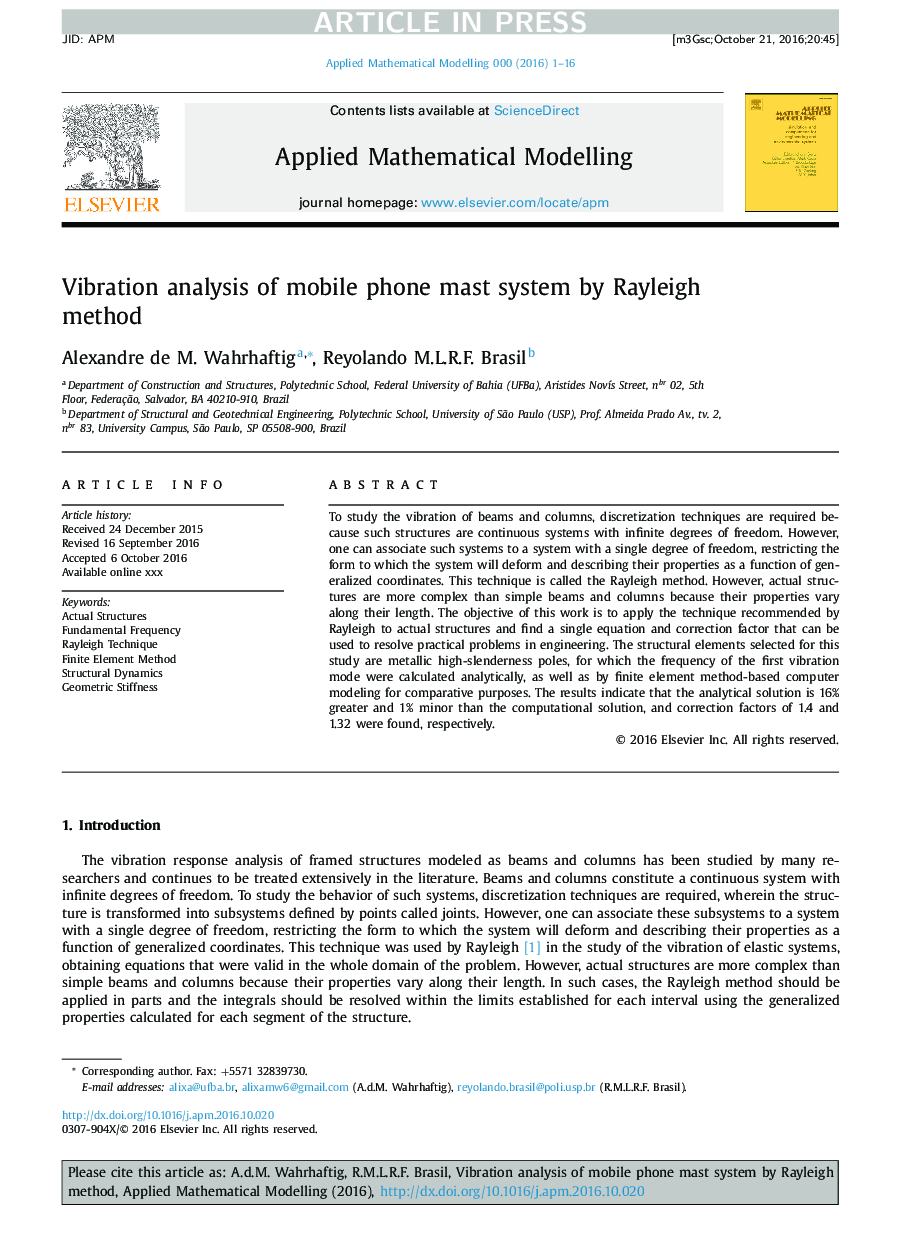| Article ID | Journal | Published Year | Pages | File Type |
|---|---|---|---|---|
| 5470882 | Applied Mathematical Modelling | 2017 | 16 Pages |
Abstract
To study the vibration of beams and columns, discretization techniques are required because such structures are continuous systems with infinite degrees of freedom. However, one can associate such systems to a system with a single degree of freedom, restricting the form to which the system will deform and describing their properties as a function of generalized coordinates. This technique is called the Rayleigh method. However, actual structures are more complex than simple beams and columns because their properties vary along their length. The objective of this work is to apply the technique recommended by Rayleigh to actual structures and find a single equation and correction factor that can be used to resolve practical problems in engineering. The structural elements selected for this study are metallic high-slenderness poles, for which the frequency of the first vibration mode were calculated analytically, as well as by finite element method-based computer modeling for comparative purposes. The results indicate that the analytical solution is 16% greater and 1% minor than the computational solution, and correction factors of 1.4 and 1.32 were found, respectively.
Related Topics
Physical Sciences and Engineering
Engineering
Computational Mechanics
Authors
Alexandre de M. Wahrhaftig, Reyolando M.L.R.F. Brasil,
